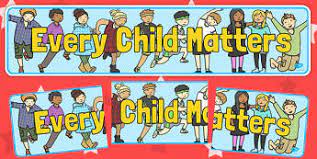Education is the lifeblood of our society, fueling creativity, innovation, and progress. With this in mind, the “Every Child Matters” framework was established to ensure each child receives an equal opportunity to succeed and flourish. This article will discuss the key aspects of Every Child Matters and explore how it can be integrated into the curriculum.
Every Child Matters is a government-driven initiative launched in England in 2003. The policy aims to improve the well-being of children aged 0-19 by addressing their educational, health, and social needs. The program revolves around five primary outcomes – being healthy, staying safe, enjoying and achieving, making a positive contribution, and achieving economic well-being.
At its core, Every Child Matters aims to ensure that no child falls through the cracks or gets left behind. To bring this vision to life, schools must adapt their curricula by incorporating these crucial outcomes throughout various subjects and activities.
1. Being Healthy
Encouraging students to lead healthy lifestyles is an integral part of Every Child Matters. Educators can promote healthy habits by integrating lessons about nutrition and exercise into science and physical education classes. In addition to classroom teaching, schools can promote extracurricular activities such as sports clubs, dance classes, or gardening programs where learners actively experience the benefits of a healthy lifestyle.
2. Staying Safe
Ensuring a safe learning environment for children plays a vital role in their personal development. Teachers must create open communication channels for students to express any concerns regarding bullying or personal safety issues. Schools can embed safety awareness within different subjects such as Internet safety in Information Technology classes or road safety during Geography lessons.
3. Enjoying and Achieving
Developing a love for learning is essential for every child’s academic success. A diverse curriculum that caters to varying interests will help students find joy in their studies. Additionally, creating opportunities for students to showcase their talents through art exhibitions, science fairs, or school performances can foster a sense of achievement and accomplishment.
4. Making a Positive Contribution
Fostering social responsibility in students is another central aspect of Every Child Matters. Schools can nurture this by hosting community service activities and encouraging classroom discussions on essential societal issues such as climate change, poverty, or human rights. Integrating these topics into subject areas like Social Studies will make the learning experience more impactful and relevant.
5. Achieving Economic Well-being
To prepare students for a prosperous future, educators must instill skills like budgeting, time-management, and communication. Classes such as Economics, Business Studies, and Personal Development can help students gain valuable knowledge about career planning and financial literacy.
In conclusion, the Every Child Matters initiative is essential to building a robust education system that equips every child with the necessary tools for success. To realize this vision, schools must adopt an adaptable curriculum that encompasses all five key outcomes of well-being. By doing so, we can ensure that our children grow up to be healthy, responsible, skilled adults ready to face the challenges of an ever-changing world.





